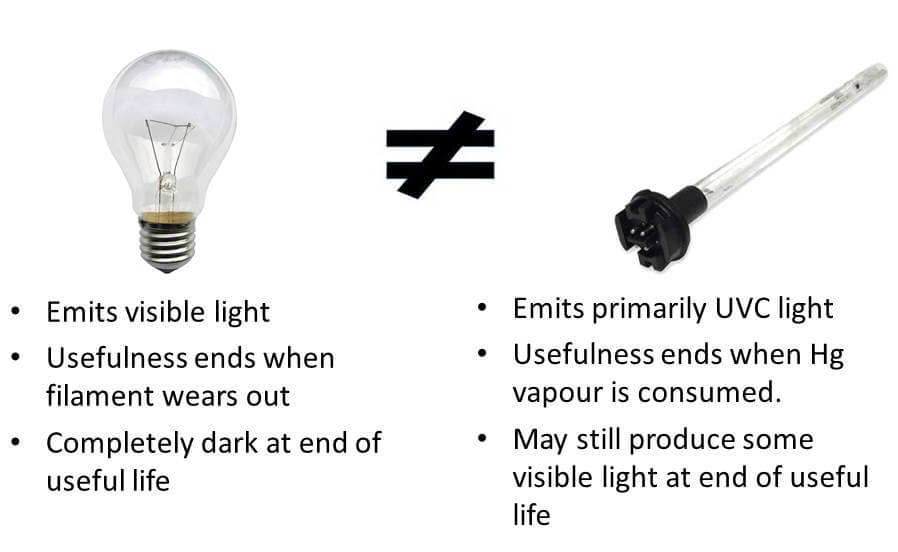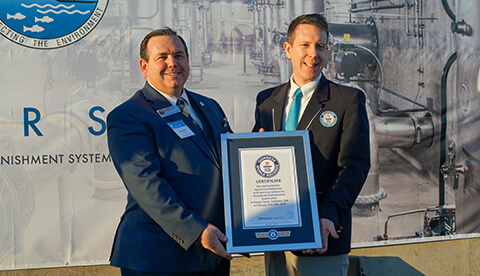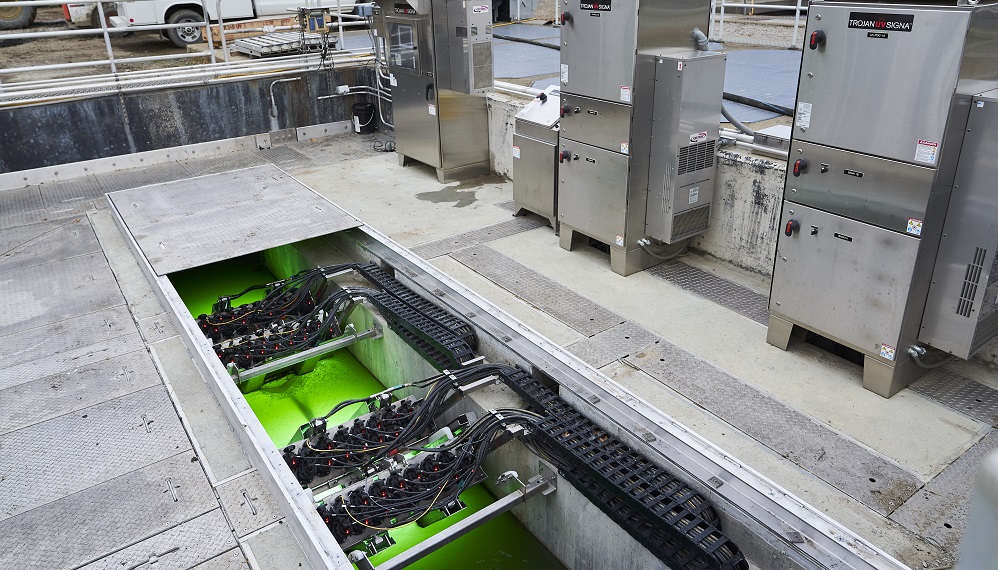All About UV Lamps For Residential UV Treatment Systems
One of the most misunderstood things about a UV water treatment system is why the lamp should be changed even though it still appears to be working. Why is it that the useful life is typically defined as 9000 hours, or about one year of continual use?
The problem arises from the fact that, for most of us, our understanding is heavily influenced by our experience with incandescent lights. These are your garden-variety bulbs used in most household light fixtures, though this is slowly changing as more energy efficient models are introduced. But back to the incandescent bulb – it’s not necessary to change the bulb until it quite literally burns out.
Light Bulb vs. UV Lamp

An incandescent light bulb works by passing electricity through a tungsten filament. This generates heat that causes the tungsten to glow. That glow is in the visible light spectrum, so we see the light. This explanation could be a little more scientific invoking terms like “resistance” and “photons” and such, but that about sums it up. The tungsten filament is deteriorated with use and eventually it becomes so thin that it quite literally snaps. POOF. End of useful life for the incandescent bulb.
A UV lamp, however, operates on a different principle, more like a fluorescent light. In this case, the electricity is still passed through a tungsten filament which heats up, but that energy “excites” the mercury vapor contained in the lamp. (Not to worry, only a very small amount of mercury is used, typically <10 mg, and it’s contained.) In this case, it is the mercury vapor that glows and, as it turns out, emits ultraviolet (UV) light. This is exactly what’s needed to inactivate any microorganisms in your water supply.
Is it Time to Change the UV Lamp in Your Residential UV Treatment System?
As you may know, UV light is not visible to the naked eye and is, in fact, quite damaging, so never look directly at a UV lamp while it’s on. If your system has a view port, you may see a blue glow from the lamp, but that’s not a result of the UV rays. Remember, UV light cannot be seen by the human eye. This glow is simply a by-product of the lamp’s operation.
The useful life of the UV lamp is determined by the rate at which the mercury is consumed. That very small amount of mercury contained in the lamp will provide sufficient UV rays to treat the water for about one year. After that, although the lamp appears to be working, there is not enough UV produced to rely on the quality of the water.
Changing the lamp on time is critical to ensuring the optimal performance of your UV system. That’s why many residential UV systems have a timer that will count down from 365 days and then sound an alarm to let you know it’s time for a lamp change. As important as being prompt about it is, it is equally important to make sure you get a UV lamp that has specifically been designed for your UV system.
Featured Posts
IntensiCarb wins Bronze Project Innovation Award during the IWA World Water Congress & Exhibition
This solids intensification technology enables more than quadrupling anaerobic treatment capacity within existing infrastructure. LONDON, ONTARIO, August 16, 2024 —Trojan Technologies is proud to announce that IntensiCarb™ has been honored with the prestigious...
Ensuring Safety and Quality in Food Contact Materials (FCM): Understanding the European Framework Regulation (EC) 1935/2004
The European Framework Regulation (EC) 1935/2004 is a major regulation governing the safety and quality standards of the food and beverage industry. It ensures that all food contact materials (FCM) are safe and compliant with European Union (EU) legislation. In this...
Achieving High-Purity Water for Microelectronics: Sustainable Solutions with Aquafine Technology
As we rapidly progress towards a more technologically dependent world backed by AI advancements, progressive medical devices, and automation, the demand for microelectronics has been increasing rapidly too. The unique nature of microelectronics fabrication processes...







